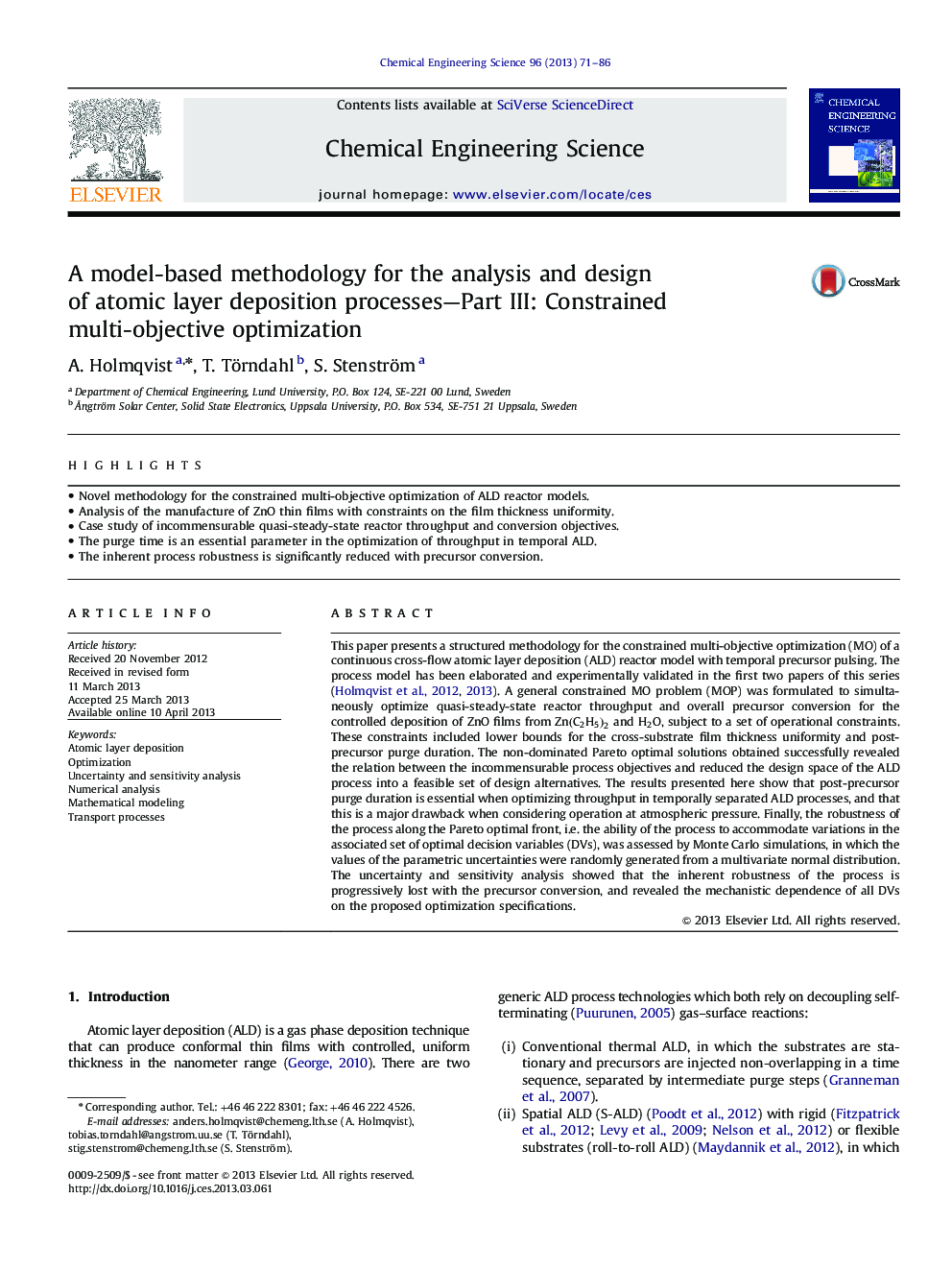| Article ID | Journal | Published Year | Pages | File Type |
|---|---|---|---|---|
| 155285 | Chemical Engineering Science | 2013 | 16 Pages |
•Novel methodology for the constrained multi-objective optimization of ALD reactor models.•Analysis of the manufacture of ZnO thin films with constraints on the film thickness uniformity.•Case study of incommensurable quasi-steady-state reactor throughput and conversion objectives.•The purge time is an essential parameter in the optimization of throughput in temporal ALD.•The inherent process robustness is significantly reduced with precursor conversion.
This paper presents a structured methodology for the constrained multi-objective optimization (MO) of a continuous cross-flow atomic layer deposition (ALD) reactor model with temporal precursor pulsing. The process model has been elaborated and experimentally validated in the first two papers of this series (Holmqvist et al., 2012 and Holmqvist et al., 2013). A general constrained MO problem (MOP) was formulated to simultaneously optimize quasi-steady-state reactor throughput and overall precursor conversion for the controlled deposition of ZnO films from Zn(C2H5)2Zn(C2H5)2 and H2OH2O, subject to a set of operational constraints. These constraints included lower bounds for the cross-substrate film thickness uniformity and post-precursor purge duration. The non-dominated Pareto optimal solutions obtained successfully revealed the relation between the incommensurable process objectives and reduced the design space of the ALD process into a feasible set of design alternatives. The results presented here show that post-precursor purge duration is essential when optimizing throughput in temporally separated ALD processes, and that this is a major drawback when considering operation at atmospheric pressure. Finally, the robustness of the process along the Pareto optimal front, i.e. the ability of the process to accommodate variations in the associated set of optimal decision variables (DVs), was assessed by Monte Carlo simulations, in which the values of the parametric uncertainties were randomly generated from a multivariate normal distribution. The uncertainty and sensitivity analysis showed that the inherent robustness of the process is progressively lost with the precursor conversion, and revealed the mechanistic dependence of all DVs on the proposed optimization specifications.
